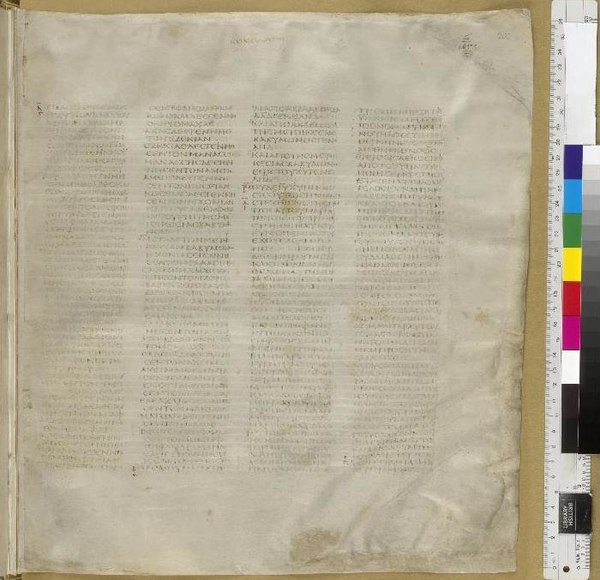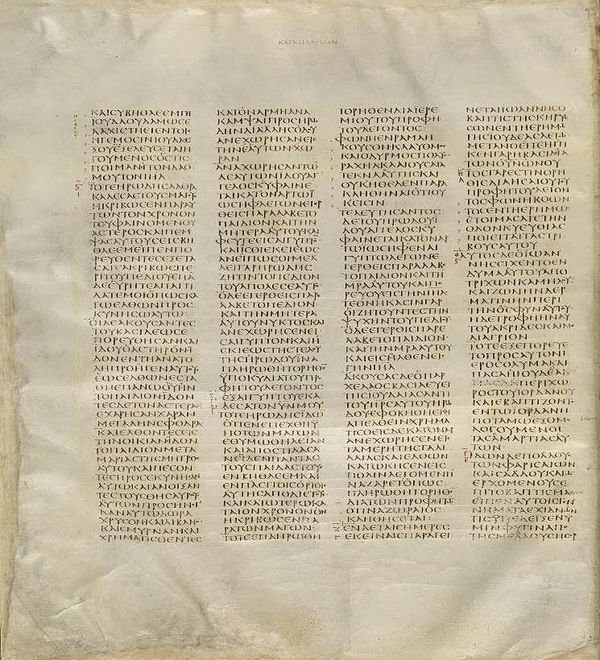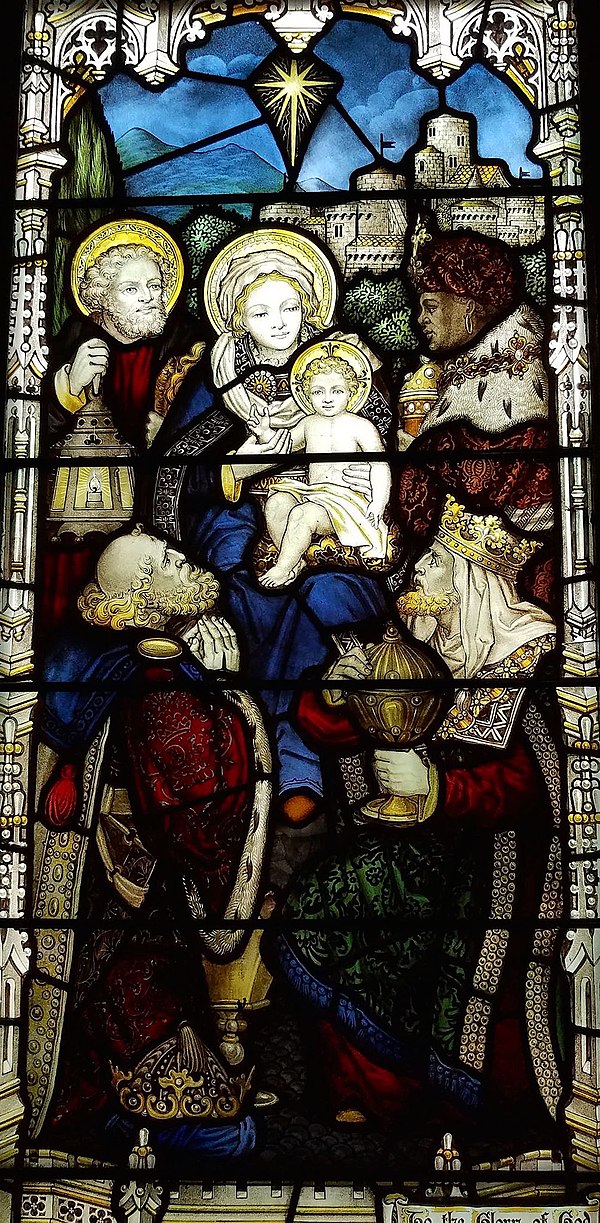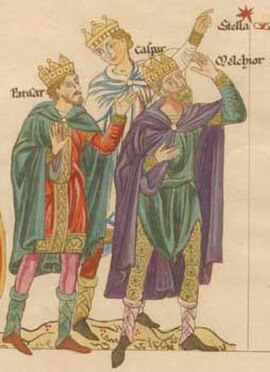Matthew 2
Videos
Page
Matthew 2 is the second chapter of the Gospel of Matthew in the New Testament. It describes the events after the birth of Jesus, the visit of the magi and the attempt by King Herod to kill the infant messiah, Joseph and his family's flight into Egypt, and their later return to live in Israel, settling in Nazareth.

Gospel of Matthew 1:22-2:18 on Codex Vaticanus, written about AD 325-350.

The Adoration of the Magi by Bartolomé Estéban Murillo

Codex Sinaiticus (AD 330–360), Matthew 1:1-2:5

Codex Sinaiticus (AD 330–360), Matthew 2:5-3:7
Biblical Magi
Videos
Page
In Christianity, the Biblical Magi, also known as the Three Wise Men, Three Kings, and Three Magi, are distinguished foreigners who visit Jesus after his birth, bearing gifts of gold, frankincense, and myrrh in homage to his birth. As such, the Magi are commemorated on the feast day of Epiphany—sometimes called "Three Kings Day"—and commonly appear in the nativity celebrations of Christmas.

The Three Magi, Byzantine mosaic, c. 565, Basilica of Sant'Apollinare Nuovo, Ravenna, Italy (restored during the 19th century). As here, Byzantine art usually depicts the Magi in Persian clothing, which includes breeches, capes, and Phrygian caps.

Biblical Magi stained glass window, c. 1896, at the Church of the Good Shepherd (Rosemont, Pennsylvania), showing the Three Magi with Joseph, Mary, and Jesus.

Incised third century A.D. sarcophagus slab depicts the Adoration of the Magi, from the Catacombs of Rome - translated as, "Severa, may you live in God", Severa being the woman buried in the sarcophagus and likely the figure to the left of the inscription.

The three Magi (named Balthazar, Caspar, and Melchior), from Herrad of Landsberg's Hortus deliciarum (12th century)